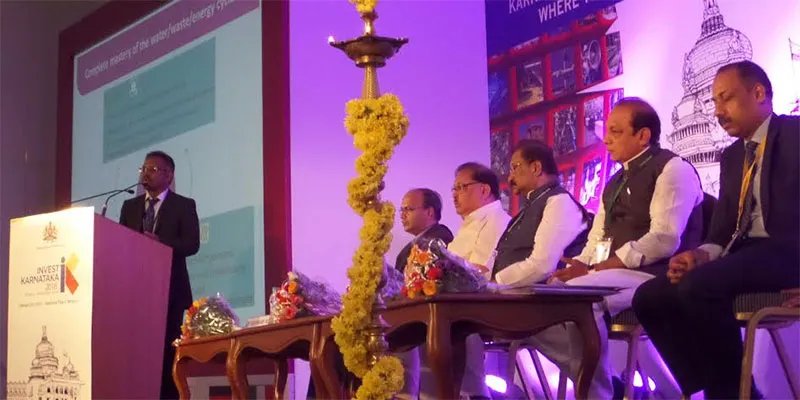Infrastructure development in Karnataka: going from rapid to rational urbanisation
Bengaluru’s population has skyrocketed from 1.65 million in 1971 and five million in 2001 to 11 million in 2015, and will cross 14 million by 2030, according to industry and government experts at the Invest Karnataka 2016 summit.
Urban infrastructure planning and execution will be key challenges for Indian cities like Bengaluru, and will call for extensive public-private partnerships. Karnataka has 44 new projects in urban development for Bengaluru and other cities worth Rs 90,000 crore, according to TM Vijaya Bhaskar, ACS, UDD, Government of Karnataka.
“Flyover and underpass projects for Bengaluru, including elevated roadways, will be worth Rs 20,000 crore and suburban railways projects will account for an additional Rs 9,000 crore,” added K.J. George, Bangalore Development Minister.

Insights from overseas
Vinod Singh, Vice-President, CH2M Engineering Services, urged Bengaluru planners to learn from the example of Singapore, widely regarded as one of the best planned and managed cities in Asia. In Bengaluru, only eight per cent of project budgets is allotted to operations and maintenance, whereas the comparative figure for Singapore is over 20 per cent.
Urban planning in Singapore is long-range and holistic, and based on transparency, professionalism, and lack of corruption. Efforts are taken to include pavements and handicap ramps along with road development, as well as drains for excess water flows. Accurate monitoring is used to trace and reduce wastage of drinking water resources.
Other examples to emulate from overseas include smart metering and tracking. “Vodafone has implemented smart parking in New Zealand and intelligent dustbins in Korea,” noted Satish Mittal, CTO of Vodafone India.
Case studies from other parts of India
“Cities like Nagpur have implemented effective water flow and management solutions,” said M.J.R. Chowdhary, General Manager, Veolia. Such arrangements are based on risk-based contracts, which will be crucial in India where water supply is erratic and urbanisation is rapid.
ILFS has implemented effective solid waste management programmes in Burari, and waste to energy conversion projects in Ghazipur. Two million tonnes of waste have been processed in Burari, and converted into road building materials. Two million kilowatt hours of electrical power have been generated from waste in Ghazipur. Other notable initiatives have been training women ragpickers to become artisans and entrepreneurs to create sustainable businesses out of waste processing.
Smart cities and IoT
“India’s 100 smart cities will require $150 billion in funding, of which $120 billion will come from the private sector,” said Darshan Parikh, Associate Director, CRISIL. Success factors for smart cities are social and physical infrastructure, as well as strong institutional support with adequate economic support.
From Karnataka, Davanagere and Belagavi have been chosen for funding of Rs 1,000 crore for the Indian government’s ambitious 100 Smart City initiative. This will include a wide range of features such as smart parking and street lighting, underground utility ducting, CCTV, walkable localities, and citizen-friendly governance.
“The Karnataka government has proposed six new elevated road projects for Bengaluru,” said K.S. Krishna Reddy, Managing Director, KRDCL. Two of them will be east-west, one north-south, and three connecting corridors.
He called for increasing public-private-citizen partnership in these initiatives, and it would be good to see more citizen organisations invited to such events to share how such co-creation models could work.







